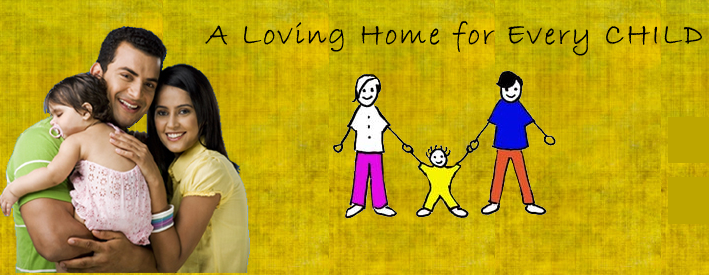More Girls Are Being Adopted. The Good News Ends There
Outside a temple in the holy town of Mathura in Uttar Pradesh, a two-day-old girl was abandoned on August 22, a common-enough occurrence across India. Indeed, five days later, a four-day-old girl was abandoned on a road outside a Lucknow neighbourhood.
Abandoning infant girls may be common, a reason why there are many more girls in Indian orphanages than boys who are not usually abandoned, a reflection of the low status accorded to girls in India.
According to National Crime Records Bureau (NCRB), a division of the home ministry, 930 children were abandoned across India in 2013. This is clearly a dramatic underestimate. A report presented before the Supreme Court on abandonment estimates that 11 million children are abandoned, of which 90% are girls.
There are no official records of how many children are sheltered in orphanages. The Ministry of Women and Child Development does not maintain records of orphans. However, ChildLine India Foundation, a non-government organisation (NGO) based in Mumbai, operates a 24-hour telephone helpline called Childline for children in distress, says that there were 25 million orphans in India in 2007, according to a United Nations Children’s Fund (UNICEF) estimate.
The bottom line is that only about 0.04% of abandoned children are adopted every year.
The only positive trend to emerge from abandonments is that many more girls than boys are being adopted across the country.
In 2013-14, 3,924 children were adopted all across India, of which 2,293 were girls and 1,631 were boys. Maharashtra adopted more children than any other state with 1,068 adoptions; however, the state adopted more boys, 543, than girls, 525. It was followed by West Bengal (366), Karnataka (320), Andhra Pradesh (272) and Tamil Nadu (187). In most other states, the adoption of girls is more than boys. While 1,270 girls were adopted, 943 boys were adopted among the top five states in 2013-14.
Another observation: the number of adoptions fell across the country: 5,964 (2011-12), 4,694 (2012-13) and 3,924 (2013-14), probably because of tightened adopted procedures after many incidents of child trafficking.
In 2012, a total of 308 Indian children were adopted in 33 countries around the world with US citizens adopting 111 children followed by Italy (59) and Spain (48). Maharashtra with 81 adoptions tops the states as the leading choice for inter-country adoption followed by Delhi (70). The number of adoptions declined from 629 in 2011 to 308 in 2012, which seems to have picked up in 2013 with a rise to 430 inter-country adoptions, according to the Central Adoption Regulatory Authority (CARA).
According to a senior CARA official, the reasons for the decline in adoption include increased awareness about child abandonment, family support and poverty-alleviation programmes.
“Single parent families who were abandoning children on grounds of poverty are now retaining their kids, with improving economic conditions. The second reason is the heightened restoration effort with biological parents leading to lesser giving up of children,” the official told IndiaSpend, requesting anonymity because he is not authorized to talk to the media.
Also, stronger measures are being taken to track missing children by various Government agencies after the Supreme Court direction on the ‘Bachpan Bachao Andolan (Save childhood campaign)’, a movement to safeguard children’s rights to end forced labour, child labour and trafficking.
Asked about the growing number of girls adopted, the CARA official said adoptive parents prefer girls. “The other reason is the typical Indian preference for a male child,” the official said. “People use illegal methods to adopt boys. Hence the inflow of boys coming into legal adoption is less compared to girls. Therefore, the adoption of girls is more.”
Sunil Arora, executive director, Bal Asha Trust, a home for abandoned and destitute children, looking after their education, healthcare and adoption, and vice president, Federation of Adoption, Maharashtra, said new-age couples in metro and semi-metro cities understand that there is no difference between a boy and girl.
“Girls are now progressing in every field and these parents have no apprehensions. Since there is no data available for how many girls or boys are abandoned, it’s difficult to compare data.”
Arora said many special needs children find loving and caring homes outside India. “We recently placed a five-year old HIV-positive child with a (foreign) family. This is an important development for two reasons: the child finds a home; and HIV children can also find loving and caring families. They need not live in orphanages for life without a family’s support and love.”
Adoptions in India were previously practised under the Hindu Adoption and Maintenance Act, 1956 and Guardian and Wards Act, 1890. Only Hindus, which includes Buddhists, Sikhs and Jains, could legally adopt children. Adoption was not allowed under the personal laws of Muslims, Christians, Parsis and Jews in India; they could only be guardians of a child through the Guardians and Wards Act, 1890.
Arora said the pace of adoption may change with the new Juvenile Justice Act. “It is quite possible that the process is getting streamlined and time-bound, and more children who are without families and are legally free for adoption may find homes.”
Lorraine Campos, assistant director of Palna, one of Delhi's biggest orphanages, said: “With the Juvenile Justice Act, 2000 coming into force now, anybody can adopt children legally, irrespective of their religion.”
Image Credit: CARA
“Liked this story? Indiaspend.org is a non-profit, and we depend on readers like you to drive our public-interest journalism efforts. Donate Rs 500; Rs 1,000, Rs 2,000.”



